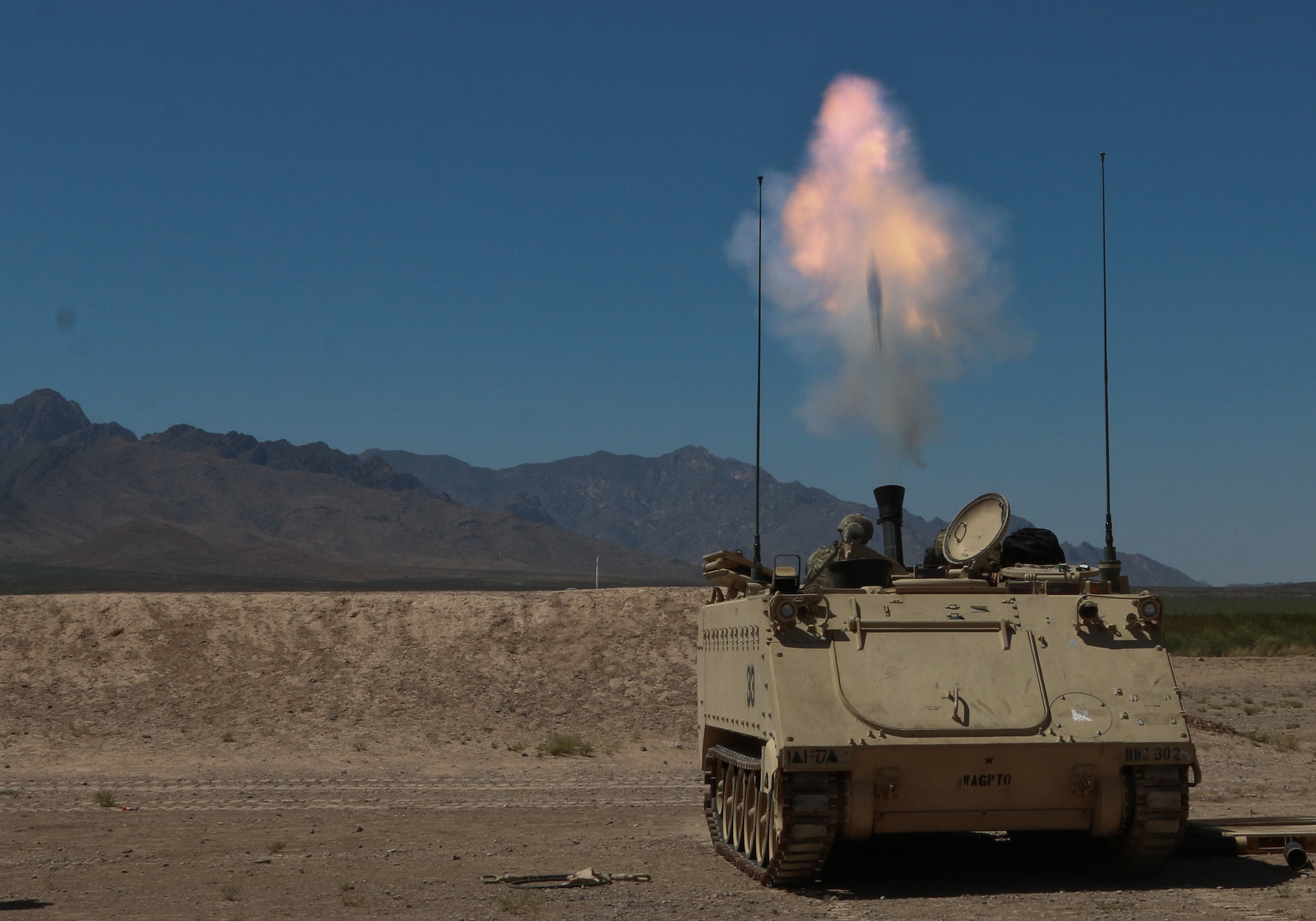

A mortar is artillery at its most simple. A shooter angles the mortar’s tube just right, drops the bomb in, and then the round rockets out, arcing a high trajectory up and over any protective walls between the shooter and its target. The “Iron Sting,” a new kind of mortar-launched bomb made by Israel’s Elbit Systems, aims to deliver that small explosion more precisely than ever before.
Revealed March 14, the Iron Sting is billed as a triumph of the miniaturization of precision guidance systems, giving more accurate fire power to soldiers than was previously available, especially at the same scale and cost.
While mortars as a category date back centuries, the modern incarnation is generally a simple angled tubed with a stand and a firing pin in the base. The mortar is angled to launch towards a target, and the round is dropped in, triggering an explosive propellant and hurling the small bomb up and then down over whatever building, person, or vehicle its been pointed at.
Because of the angle of attack, mortars are an indirect firing weapon, one that lets the people firing the mortar hide behind cover and lob bombs at their enemy. This helps the people firing the mortar avoid return fire. It also means that they have to trust in the accuracy of the shots, and the quick calculations done to angle the weapon just right.
There’s a special kind of statistical analysis the military uses to explain how likely a bomb is to hit a given target when delivered a certain way. It’s called “circular error probable,” (CEP) and in ballistics science, it denotes the distance from the target where it’s reasonable to expect half of all fired shots from a given weapon to hit. The CEP is given in as the radius out from the target of that probability area, so a weapon with a CEP of 100 feet means that half of shots fired at a target will fall within a circle drawn 100 feet out from where it was supposed to hit. The shorter the radius, the more accurate the weapon.
In the 2000s, the US Army held that the CEP for a 120mm mortar round at maximum range was almost 450 feet. That means half of the shots fired at a target were less accurate than being 450 feet from the mark.
What Iron Sting adds to its 120mm mortar round design are two different guidance systems, each of which shrink the CEP of a mortar shot. The first is GPS. As the US Army discovered in the 2010s, putting GPS on a 120mm mortar round can shrink the CEP radius down to less than 32 feet, and with the Iron Sting that’s no different.
The second improved guidance system is an internal measurement unit and a laser-reading diode. If a person, either with a small drone or a plane or a hand-held designator, points a laser at a target—say a specific concrete bunker—the mortar’s laser diode will see that painted target, and then with internal calculations move its fins to steer towards the bunker. Using this system, Elbit boasts that Iron Sting has a CEP radius of less than 3 feet.
All of this work goes into delivering about 24 pounds of explosive at a distance of between about 0.66 miles and 7.5 miles. As a rough comparison, the mortar’s payload is about 1/10th the size of the smallest plane-dropped bombs in the US inventory. Despite that small size, the Iron Sting’s warhead is, according to the company’s brochure, capable of penetrating double reinforced concrete.
“The introduction of this laser and GPS guided munition transforms the mortar system from a statistical fire power into a precision fire system,” Yehuda Vered, General Manager of Elbit Systems Land Division, said in a release.
All else being equal, it is generally better for bombs to hit where they are targeted than not. Yet even in that calculus, only some of the error and potential for collateral damage is reduced. If the military identifies the building incorrectly, or the vehicle incorrectly, then no amount of precision on the target will make the bomb find who it is supposed to hit instead. A smaller error radius reduces error in the machine, not error in the overall targeting process.
These distinctions matter in battlefields fought by conventional militaries against one another. And they are especially important in irregular conflict, in fights against militias or non-state actors, which often take place among civilians—and which trend towards tragedy.
The US Army has a number of 120mm mortars in its inventory, and is reportedly looking into a demonstration of Iron Sting later in 2021, which could start the process of adding the weapon into the American arsenal.
The 120mm mortar used to launch Iron Sting in a video demonstration was mounted inside an armored vehicle. What the Iron Sting means, more than anything else, is that precision airstrikes once available only by aircraft could now be delivered by the kinds of armored trucks infantry units bring to the fight. It’s the power and responsibility of a tiny air force, packed into a series of deadly tubes.

